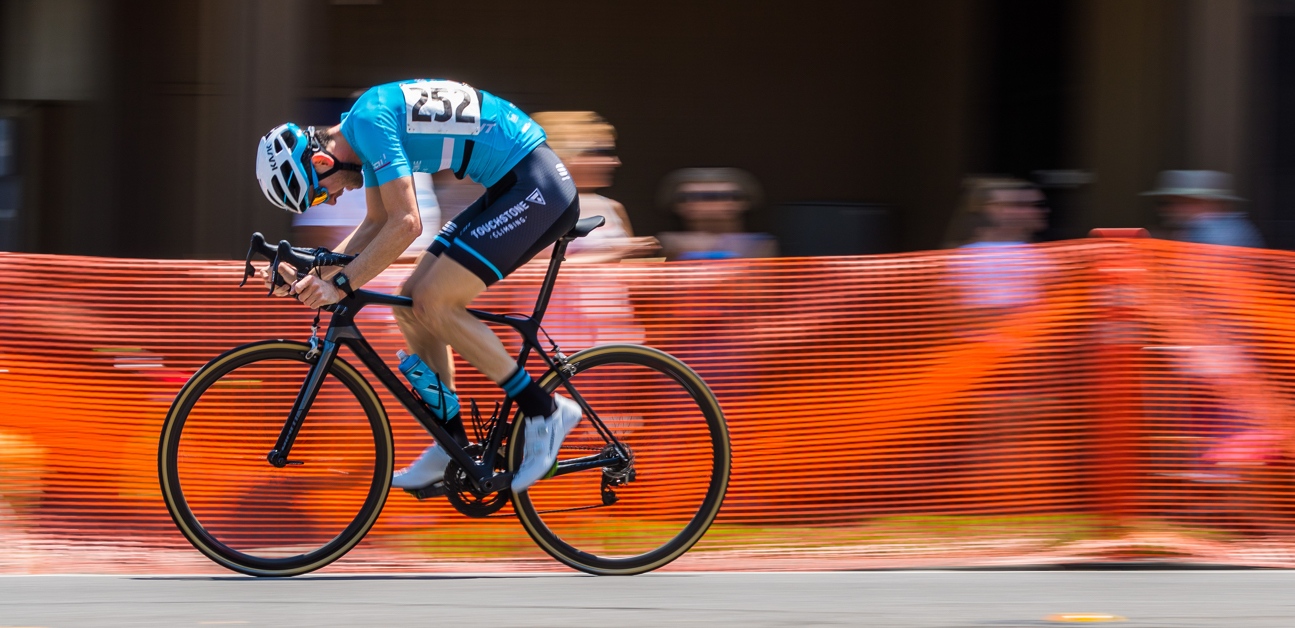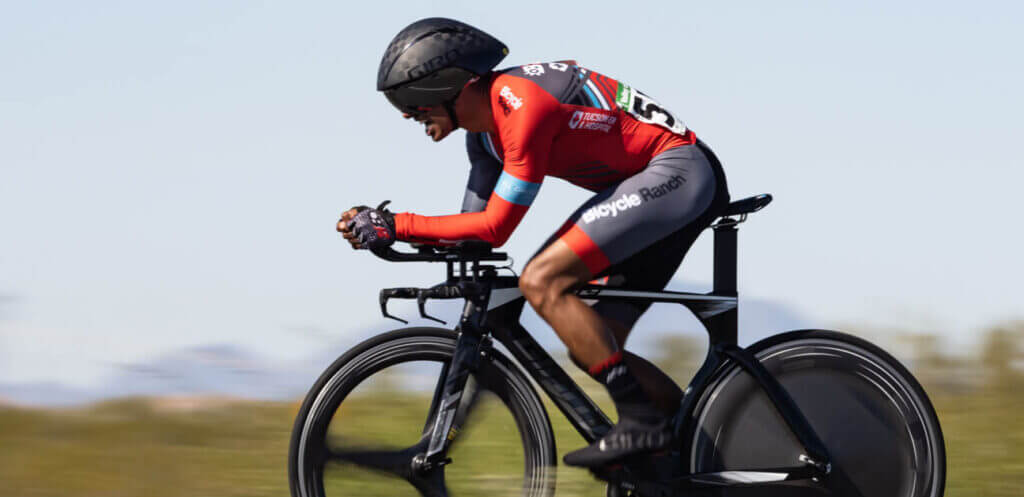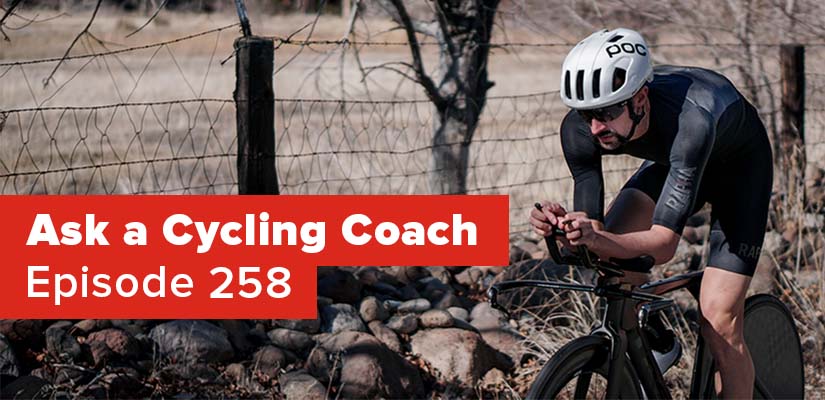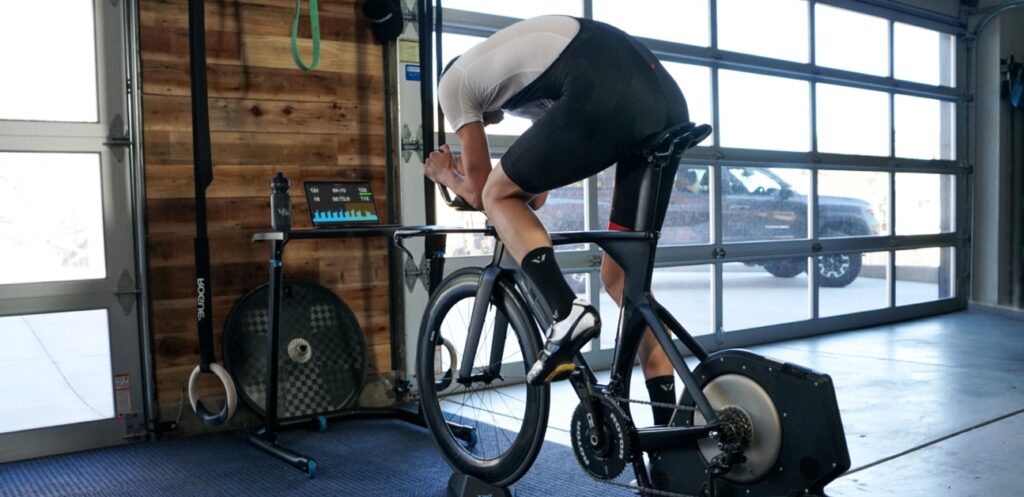How to Overcome a Cycling Plateau

Hitting a fitness plateau doesn’t necessarily mean you’ve reached your physical limits. Reassessing your training, nutrition, and recovery can help address anything that’s holding you back and will help push you through a fitness plateau.
For more information on plateau’s and training check out Ask a Cycling Coach Ep 264.
What is a Fitness Plateau
If you’re training consistently but have stopped seeing improvements in your fitness you might be experiencing a fitness plateau. A fitness plateau happens when your body grows accustomed to its training load and stops responding with physical improvements. If you’ve hit a fitness plateau you’re likely having trouble improving your FTP, completing your workouts at a higher FTP, and improving your ability to ride at higher outputs for longer durations of time.
How to Overcome a Fitness Plateau
Fitness plateaus can be frustrating to confront and frequently tough to pin point, but they’re not impossible to conquer. If you’re experiencing a fitness plateau it usually means that you need to add more high quality training stress to your training plan, change the type of training stress in your plan, rest more, or fuel better. Determining what’s best to implement starts with an individual assessment of your training.
Add Training Stress
If you’re struggling with a fitness plateau, start by assessing the quality and quantity of your training stress. In order for positive physical adaptations to occur your training needs to be challenging and consistent. If your training volume isn’t sufficiently stressful, it means that your body has adapted to that level of training stress and is no longer able to progress. If your volume is challenging, but you aren’t able to maintain that volume consistently then your body won’t have a chance to build fitness.
If you think consistency or volume might be the issue consider trying a new training volume. The right volume is one that’s physically challenging, but maintainable given the constraints of your lifestyle and your schedule. If you have more available time to train, and you feel like the volume of your training has become the limiting factor in your progress then consider increasing the volume of your training plan.
If your availability to train puts you in between volumes go ahead and elect for the lower volume plan. It’s better to stick to a volume that you can maintain, and do that consistently than to choose a plan volume that you can’t maintain and train inconsistently. If you elect for the lower volume you can always add TSS to your week when it’s a fit.
Adaptive Training
Get the right workout, every time with training that adapts to you.
Check Out TrainerRoadLimited Time
With that said, it’s not always possible to increase the volume of your training plan. Like most athletes, you probably have a limited amount of time that you can train in a given week. A time budget like this will eventually limit the amount of progress you can make, so it’s important to keep that in mind.
If you’re working with a time budget, avoiding a plateau or pushing through a plateau comes down to the structure and specificity of your training. Your body can continue to adapt and grow stronger when it’s confronted with new or unusual stimuli that it hasn’t adapted to yet. Adding specificity to your training plan along the way can help you reach new levels of fitness, and avoid a plateau.
Add Specificity
Getting out and spending time on your bike can help you get faster when you first start training. But as soon as your body grows accustomed to unstructured training, you’ll have trouble making significant improvements. If you’ve hit a fitness limit and you’ve been doing most of your training without structure, you’ll need to add structure, or add more structure to your training in order to keep progressing. You need high-quality structured training to sustainably challenge your abilities in the long term.
The same is true when you’re doing a structured training plan. As your body grows accustomed to different types of structure you’ll need to increase the specificity of that training load to continue to promote adaptation. If you aren’t sure what type of structure you need try using Plan Builder to build a custom training plan that incorporates the correct amount of variability for the fitness or goals that you’re seeking.
Reduce Stress
Athletes who are overreaching and not getting sufficient rest will see their progress slowly fade over time. If you don’t get enough rest to offset and recover from the training stress that you’ve accrued, then your body won’t be able to reap the benefits of all of your hard work. If you find yourself struggling to complete workouts, or feeling constantly fatigued this could very well be the reason for your plateau. In this case you’ll want to reduce stress and add rest.
How much rest you’ll need is relative to how quickly you’re able to recover, how fatigued you are and how much training stress you’ve been handling. Depending on your circumstances you might need to decrease your plan volume. In other cases you may just need to take a few days off. In more serious circumstances you may need to take a few weeks off from training.
Take Time Off
When in doubt, take two days off. A few days off is frequently all an athlete needs to get the mental and physical reset that they need. If you’re feeling like maybe you’re a little run down, mentally burnt out, or overly fatigued two days off might be all that you need to get things moving in the right direction again. With that said, taking two days off is only going to be helpful if there aren’t any obvious conditions that warrant a longer rest. If you’ve ramped your training up too quickly, skipped recovery weeks, overreached, or started training from illness or injury to soon then you may need to take a more substantial break. If you’re at the end of your season and you’re feeling burnout, you may want to consider creating an off season plan.
Focus on Quality Rest
If you feel like your training stress to rest ratio is balanced but you still aren’t able to fully recover from your workouts, then your rest may not be restful enough. In order for your recovery to be effective, your rest days need to be dedicated to rest. You can maximize your recovery days with these strategies.
The natural stress from your daily life plays a role in your body’s ability to recover too. If you’re going through a stressful life event, or an especially hectic time your body may not be able to sufficiently recover from the training stress you accrue during your workouts. If you are going through an especially stressful time, maybe consider a few days, or even a week off from your training to give your body enough time to recover.
Change Your Nutrition
Without proper nutrition it can be difficult to complete difficult workouts and your body may be unable to recover from the hard workouts that you do fit in. Whether or not you’ve decided that you need more rest, or more stress, take a look at your nutrition. Do you fuel your sweet spot, threshold and VO2 max workouts with carbohydrates? Are you fueling your recovery process and not just your workouts? Are you hydrating sufficiently? All of the principles of nutrition play an important role in your progression as an athlete. If you feel like you might not be fueling your workouts sufficiently then this could be hindering your progress.
It’s Frequently More than One Thing!
A plateau is frequently a multifaceted issue and not something with just one fix. The solution to your plateau might be a unique combination of nutrition, rest and stress. It might even involve adding more stress and more rest. With an individual assessment of your training and nutrition, you can make adjustments to your regiment that encourage progress.
For more cycling training knowledge, listen to Ask a Cycling Coach — the only podcast dedicated to making you a faster cyclist. New episodes are released weekly.


